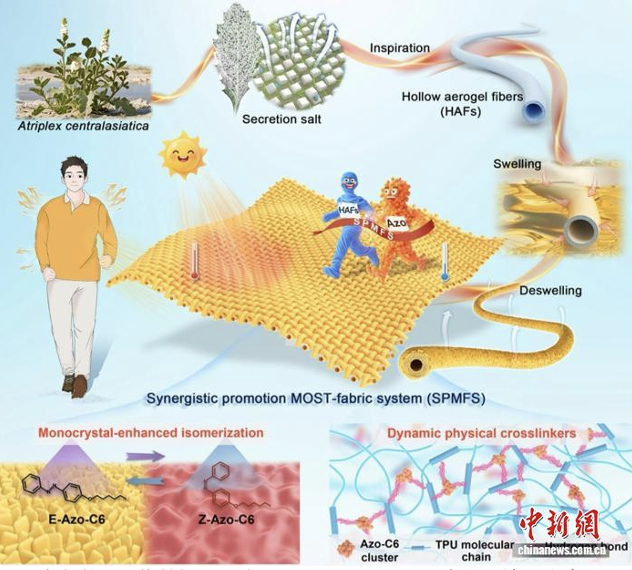https://j.people.com.cn/n3/2025/1015/c95952-20377293.html
https://advanced.onlinelibrary.wiley.com/doi/10.1002/adma.202514043
Inspired by the “salt absorption-exclusion” mechanism of plants growing in saline soils, a team at Tianjin University has developed a molecular solar thermal fiber (MOST) that combines efficient photothermal conversion with excellent mechanical properties.
The team used hollow aerogel fibers made of thermoplastic polyurethane as the substrate, immersing them in a special azobenzene/chloroform solution for “soaking” processing. The fibers absorbed the solution sufficiently and expanded. Upon drying, the azobenzene molecules were extruded from the interior, forming a uniform, dense single-crystal layer on the surface. This “outerwear” of azobenzene single crystals not only further compacted the internal molecular structure of the fiber, but also endowed it with unique optical properties and mechanical strength.
In experiments, this new fiber demonstrated excellent thermal management capabilities. Irradiation with 420-nanometer blue light increased its temperature by 25.5°C within 70 seconds. Even in a low-temperature environment of -20°C, the material achieved a temperature rise of 21.2°C in 50 seconds. Even more noteworthy is its high durability. It maintained over 90% of its photothermal performance even after 50 frictions, 500 stretches and bends, and 72 hours of continuous washing, overcoming the issues of conventional MOST materials, such as their tendency to peel and short lifespan.

